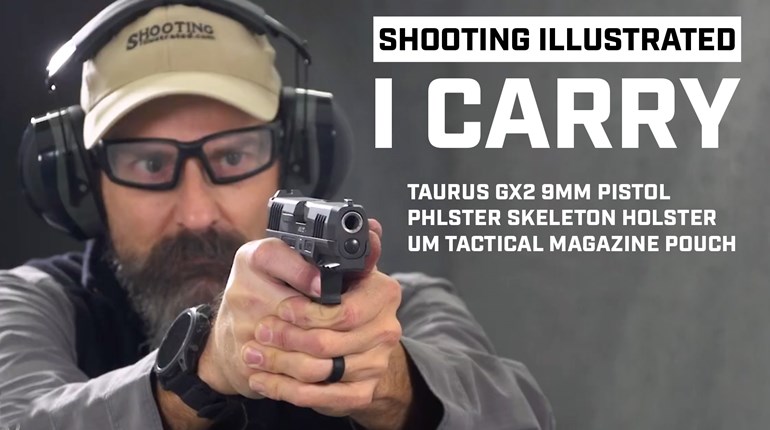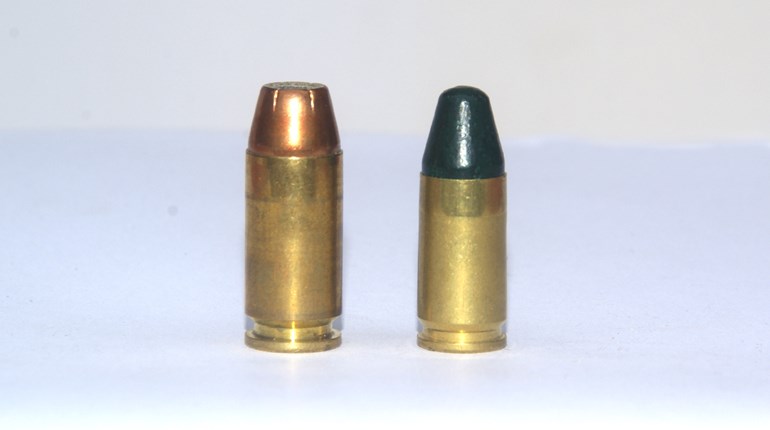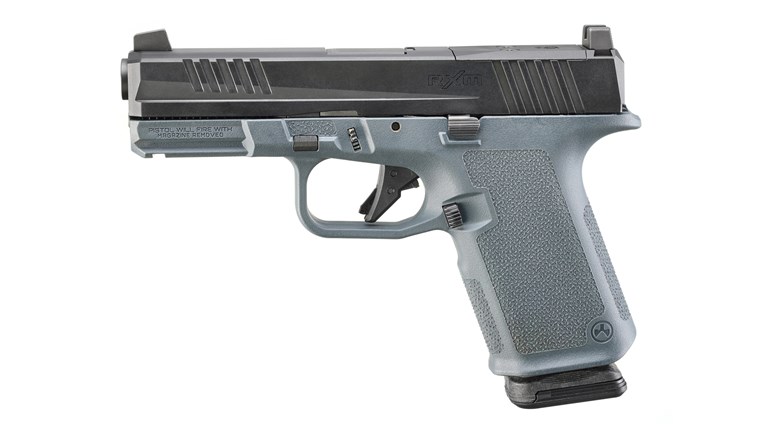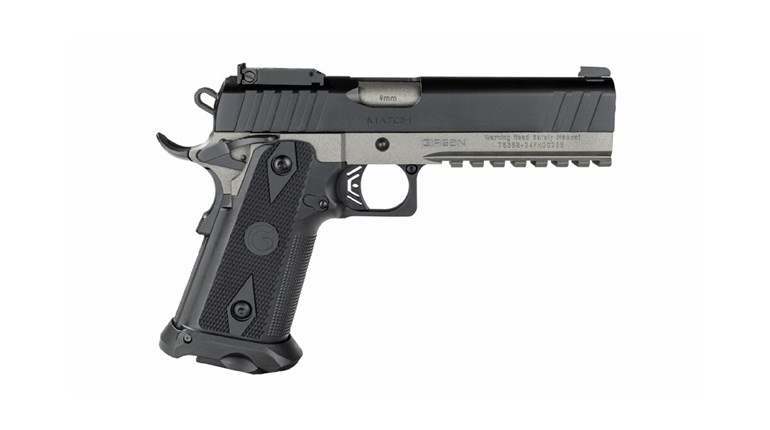
Does Joe Biden even know what guns he wants to ban?
“Why should we allow people to have military-style weapons including pistols with 9 mm bullets and can hold 10 or more rounds?” asked Biden, as quoted in the Seattle Intelligencer on Nov. 14, 2019.
Biden’s spin doctors had to go to work. “No, Joe Biden does not want to ban 9 millimeter pistols,” said Politifact. The “fact check,” after regurgitating a series of anti-gun talking points, said, “His campaign says no … . There is no mention of banning any type of traditional handgun on Biden’s presidential campaign website.” This leaves me wondering what a “traditional handgun” is anyway? They didn’t say. But they did call the claim “false.” But then, from the White House on May 30, 2022, Biden said: “A 9 mm bullet blows the lung out of the body. So, the idea of these high-caliber weapons is of—there’s simply no rational basis for it in terms of thinking about self-protection, hunting.” Biden followed that up with “I mean, I just—and remember, the Constitution, the Second Amendment was never absolute. You couldn’t buy a cannon when the Second Amendment was passed. You couldn’t go out and purchase a lot of weapons.”
Actually, Mr. President, you could. And many did. And while a cannon might be able to create the sort of wound you described, a 9 mm handgun could not.
When any thinking person reads Biden’s statements, they’d have to come to the conclusion that he’d like to ban 9 mm pistols because they don’t have “a rational basis” and he’d like to take away anything with a “high-capacity” 10-round (his number, not mine) magazine.
Coincidently, the 9 mm pistol is the number-one selling firearm, let alone handgun, in this nation today—as it has been for some time. Americans are buying them to the tune of at least a million a year. People are buying pistols chambered in 9 mm because it is judged by millions of law-abiding consumers to be the best tool for “self-protection.” Any firearm is a compromise of size, weight and power. The 9 mm provides sufficient power and ballistics to deter or stop a threat; meanwhile, it still enables gun manufacturers to make a compact gun.
On the Military Connection
Here’s another thing about semi-automatic pistols: There is no line between military, police, civilian or otherwise. An H&K in my gun safe is the same one carried by my county sheriff. Pistols have been used by a military first, or they have been offered commercially first. The Glock 17 was adopted by the Austrian army before it became the most-popular product of its type in the commercial gun market. The “U.S. Pistol, M9” was the Beretta Model 92 FS and was sold to countless civilians before the U.S. Army got around to issuing it. The SIG Sauer P320 was a consumer gun before it was adopted as the U.S. M17 and M18.
The Shape of Things to Come
Neither the self-loading pistol with a “high-capacity” magazine nor the 9 mm Luger cartridge are particularly new. On the pistol side, by 1893, true innovation was pretty much over—and we probably had the first somewhat successful striker-fired handgun. Really, only materials, details of recoil-operation and bullet diameter would change over the course of the next 130 years or so. The idea of what we call the “modern handgun” was on the market when the Wright Brothers were still fixing bicycles. The problem was, we didn’t know it—yet.
Hugo Borchardt, an American, had developed a semi-automatic pistol chambered for a cartridge powerful enough for self-defense that was semi-automatic, recoil-operated and had a detachable box magazine fed through the grip. It was called the C93. If that concept seems familiar, it’s because most semi-automatic pistols available today follow those principles.
And that cartridge? The .30 Borchardt was a .30-caliber, 85-grain bullet in a rimless, bottle-neck case moving out at 1280 feet per second (f.p.s.), delivering 309 foot-pounds of energy. But the Borchardt pistol wasn’t a serious commercial success; it was expensive and, well, kind of funny looking next to a Colt Single Action Army. Its magazine placement and toggle-action would be seen again in the Pistole Parabellum, or Luger pistol, starting in 1900. It seems Georg Luger picked up where Borchardt left off and delivered one of the most-iconic handguns of the 20th century.

The cartridge we know as 9 mm Luger today was called the 9 mm Parabellum when invented in 1901, and then it was adopted by the German navy and the Kaiser’s army within a decade. It was a 0.355-inch-diameter bullet in a fairly straight, rimless case. At first, the pistols had an eight-shot detachable box, but by 1913, the 32-round Trommel or “snail-drum magazine” was adopted with the long-barreled German Artillery Luger.
Today, 9 mm Luger is the most-popular center-fire pistol chambering. Bullet weights range from 115 grains at around 1155 f.p.s. and 341 foot-pounds of energy to 124 grains at 1110 f.p.s. with 399 foot-pounds of energy. Even moving up in weight to 147 grains at 950 f.p.s., it delivers about 326 foot-pounds of energy. For comparison, a 165-grain 30-’06 Springfield moves out at 2800 f.p.s. and delivers 2,873 foot-pounds of energy. Even the .30-06, my favorite hunting cartridge, does not “blow the lungs out” of anything. What it has is penetration. Still, with bullets designed for personal protection, the 9 mm is enough for personal defense.

Standard Capacity
This brings us to the question of magazine capacity. While the detachable box proved to be the better mousetrap, the C96 “Broomhandle” Mauser actually had a 10-round capacity in an internal magazine fed by a stripper clip back in, you guessed it, 1896.
Everything was there for the modern handgun by about 1933. Really, that is when it became available, but in looking at patterns and prototypes, it was there by about 1927. John Moses Browning built a couple of prototypes, but it was his protegee, Dieudonné Saive at Fabrique Nationale in Belgium, who designed a 9 mm pistol called the Grand Rendement, or “Grand Efficiency,” for a French contract that never materialized. What this gun delivered was a double-column, single-feed magazine with a standard capacity of 13 rounds. We know it today as the High Power.
The Material and Trigger of the Future
The next technological marvel was the development of the polymer frame. While guns such as the Remington Nylon 66 used plastic parts—“Better Living Through Chemistry” as Remington was owned by DuPont at the time—it wasn’t until the German firm of Heckler & Koch in Oberndorf introduced the VP70 that the polymer-framed handgun came to the fore. Striker-fired and with an 18-round magazine, it didn’t really catch on with consumers and didn’t last long after its 1970 introduction. The polymer-frame pistol came into its own thanks to one Gaston Glock. Before this, frames were steel or, sometimes, aluminum.
And it was just the frame that was polymer—it was and is a far cry from “undetectable.” As American Rifleman Technical Editor Pete Dickey wrote in 1986, the gun was not all plastic—83% of it was steel. “Nineteen ounces of steel plus about four ounces of lead, if a pistol and a full magazine are considered, should trip any metal detector—providing the unit is plugged in.” Same thing with an X-ray machine, provided the operator was awake and the machine working. That didn’t stop anti-gunners from trying to ban it, of course.

But the simple Glock 17—it only had 34 component parts—proved to be just what American shooters and law-enforcement officers were looking for. And not just in material, but also in trigger operation.
Revolvers had been the mainstay for police for decades in this country. But most defensive revolvers had and have double-action/single-action triggers. The first shot is a long heavy trigger pull that both cocks the hammer and rotates the cylinder before the gun can fire. Or the hammer can be cocked if the shooter has time for a lighter, shorter trigger pull. Most double-action semi-automatics had triggers that operated like revolvers on the first shot, then had the shorter, lighter pull for subsequent shots.
It was easier to train police officers and for other shooters to master the single pull of the Glock’s trigger. It was the same every time. Glock called it the “Safe-Action” trigger, which included a safety blade in the front of the trigger bow that had to be depressed before the trigger could move rearward to release the striker to hit the firing pin. And it came with a standard 17-round detachable magazine. The compact Glock 19, a half-inch shorter than the G17, has become the most-common handgun for civilian shooters and police officers since its 1988 introduction. There have been various “Gens,” but they all work pretty much the same as the first Glock.

Pick a Size, Any Size
Duty size, mid-size, compact and micro compact, the 9 mm pistol is offered in almost every size, finish and configuration. One of the unintended consequences of Bill Clinton’s so-called “assault weapons” bill in 1994, championed by Joe Biden at the time, was a national restriction on magazine capacity of new guns. It was a law that, thanks to the NRA, sunset in 2004, but we are still seeing a trend it set in motion. (Even the federally mandated studies on its efficacy said it had no effect on crime.) It led to a temporary rise in popularity of handguns in chamberings above
9 mm. If you can have only 10 rounds, why not make them .45 ACP? It was a brief blip, a legislative challenge to the ascendancy of the 9 mm. Gunmakers got to work, designing guns that held 10 rounds—regardless of the chambering.
By legislative fiat, personal-protection guns designed to be carried on the person got smaller. Which brings up the question: What do you want a pistol for anyway? Is it designed to be hidden on you? Is it designed to ride in a duty holster? Or is it designed to be in your lockbox at home in the event something goes bump in the night? The 9 mm can do it all, thanks to modern, effective, defensive bullet designs.
When the law expired, the makers got back to work, but there was another trend as an undercurrent, and that was the rise of the micro compact. Just about every gun maker did it, except Glock (but they got there eventually). In sum, handguns got smaller and more concealable.
In 1997, Taurus led the way with its Millennium series, designing guns around a 10-round magazine and a straight-up double-action-only trigger. Eventually Smith & Wesson introduced its Shield, Ruger its LC9s, Springfield Armory its XD-S and even Glock gave us its G43. These guns joined the 15-round-and-up 9 mm full-size guns and the mid-size guns, like the G19.

The race was on. You had colliding ideas on gun size and magazine capacity. First across the finish line was the SIG Sauer P365. This gave us an extremely small, lightweight, compact gun that held 10 or 12 rounds in its detachable box magazines. It was all the rage for the concealed-carry crowd.
The SIG Sauer was the leader of the micro-compact trend—under six inches in overall length, with three inches of barrel, about an inch wide and weighing in at less than 20 ounces. It was soon followed by just about every major gun company, and quite a few minor ones.
The more weight and barrel length you take off a gun, the less shootable it becomes. They have the recoil of the 9 mm without a lot to get your hands around. One of the downsides of the short, concealable handgun is the complete lack of sight radius. Small enough to be carried, but they are difficult to obtain critical hits at anything other than contact range. That was about to be solved.

The Rise of the Red-Dot
While sights are considerably better than the days of Hugo Borchardt, you’re still presented with a problem. Especially when you get to be my age. The sights of early semi-automatic pistols were barely there. Focus on the front sight, we are told. But even with good sights, they can all eventually become fuzzy.
But what if you could put everything in the same, single focal plane? The red-dot (sometimes green, now) projects a dot or other aiming point in a glass window between the shooter’s eyes and the target. You can shoot them with both eyes open while still being able to scan the area. In the 1990s, red-dot sights were almost as big as the guns that were under them. I tried them all. Whether it was a Tasco or an Aimpoint, they were huge tubes mounted like a Rube Goldberg device on top of your gun. They were great for competition, but not much use in the real world of personal protection. But, like everything else, electronics got smaller. The first I fired that was practical for personal protection was the EPC in 1992. It had to be epoxied—I ruined a Colt Commander slide to prove it.
But this led to the micro red-dot (MRD) revolution. What if you could easily mount an MRD on a personal protection or duty gun? They got smaller, better and more reliable. Some have battery lives measured in thousands of hours.
There needed to be a way to mount them to the gun itself. Remember, adding too much weight to the slide of a semi-automatic pistol can seriously disrupt its function. The best way was to cut out the slide is at its rear, then mount the MRD. Custom gunsmiths would machine slides to make this a reality. This got to be such a big deal that most gunmakers began replacing a portion of the slide with a plate that is easily installed at the factory. That plate typically contains the iron sights, but the size and weight of the MRD still allows the slide to function as intended.

Taking a Ride on the Chassis
The next big step in the modern handgun was the introduction of a removable chassis system. When it comes to polymer-framed handguns, typically the serial number is in at least two places, including a plate molded into the polymer.
That changed with the introduction of the SIG Sauer P250. Now this was a hammer-fired gun, not a striker-fired gun, but all the fire-control parts (the lockwork, the trigger, all of that) was in a self-contained assembly. Simply drop it into a polymer shell—one without a serial number—then hold it in place with pins. The cost in a polymer handgun does not come from the frame, but rather from integrating things like slide rails and a locking block into the polymer. With the P250, SIG figured out you could make the frame pretty much any size you wanted, full size or compact, molded to fit big hands or small.
Well, the P250 didn’t really go very far—the Air Marshals bought some—but it wasn’t until the SIG Sauer P320 that the chassis really started to make an impact. If the controlled part, the one with the serial number, could easily be removed, and you could actually find a grip shell that would fit virtually everyone’s hands, why wouldn’t you do that?
A Sea of Glocks
I can only describe my last trip to the Nation’s Gun Show in Chantilly, Va., as a sea of Glocks. They come in all shapes, sizes and colors, but they all work the same. You can have them in basic black, two-tone, pink, cherry red, Bel Air and even gold. I think the one that jumped off the table most was a gold nitrided slide with the name “TRUMP” boldly emblazoned on it. But Glocks, principally the G19 and the G43, were ubiquitous. Anything else on the tables was competing with Glock on price or features.
When I asked what percentage of the guns sold at her shop were Glocks or 9 mm, Donna Worthy, the owner of Worth-A-Shot in Millersville, Md., replied almost immediately. Glocks make up more than 20% of her business. And that’s based on how many she can get; not how many she could sell. Worthy’s shop may be a bit of an outlier as it specializes in self-defense firearms and training, but here is a figure to consider: “Probably 80 to 85% of the guns we sell are in 9 mm” she told me. She’s not alone in this.

Taking Stock of the Echelon
That takes us to what I think is the culmination of more than 130 years or so of handgun development. I will just pick the Springfield Echelon as an example of the fully featured, modern, recoil-operated polymer-framed 9 mm handgun. The Central Operating Group is its chassis, and the Echelon has the same-every-time trigger that has a safety blade in its front face that must be depressed before the striker can be released to fire the gun.
It has an adaptable polymer frame. And it has molded-in checkering to really help the shooter hold onto the pistol. Unlike machined steel, the stippling, checkering or recesses can all be molded into the design. The original Glocks had a little bit of checkering, but it wasn’t very aggressive. The Echelon has all kinds of stippling and a high beavertail shape at the rear to allow you to really get into the gun. There’s also the ubiquitous Picatinny rail on the dustcover, allowing for the mounting of lasers or lights.
Another thing it has is an extremely aggressive set of cutouts on the slide. Typically, your hand is not interacting with the slide, except when you are loading or otherwise manipulating the gun. Sights are dovetailed at the front and rear, and the cut of an MRD is between the ejection port and the rear sight. And its standard-capacity magazine holds 17 rounds in its detachable box.
This gun, and there are others with similar traits, features and pricing, stands out to me as the latest in pistol design. It has great ergonomics. It can deliver a lifetime of service. When this world ends, there will be coyotes, cockroaches and the 9 mm pistol—probably a G19, although I’d prefer an Echelon.


































